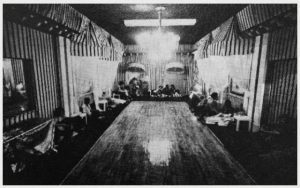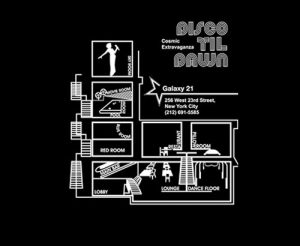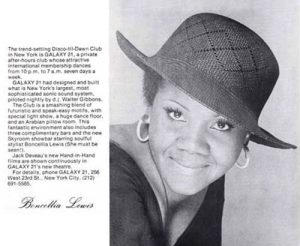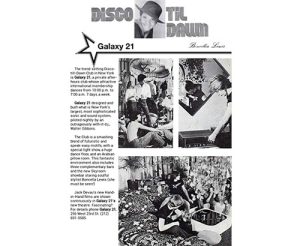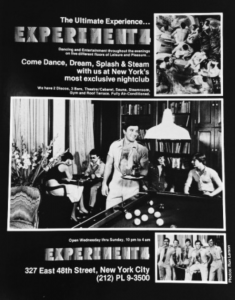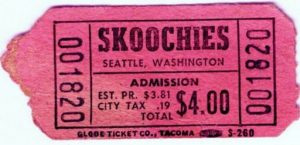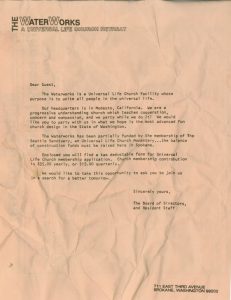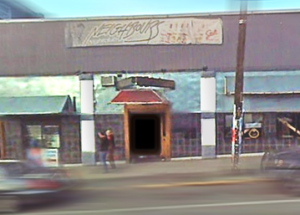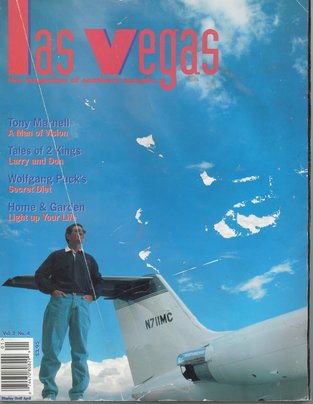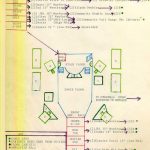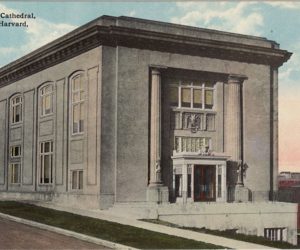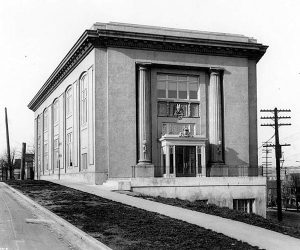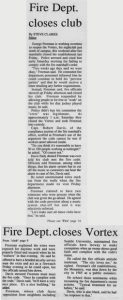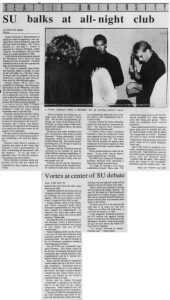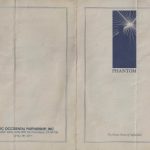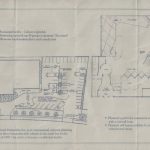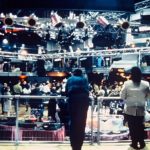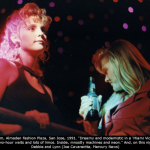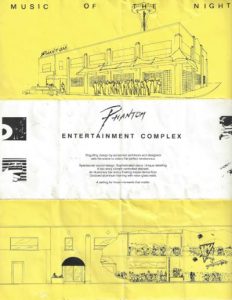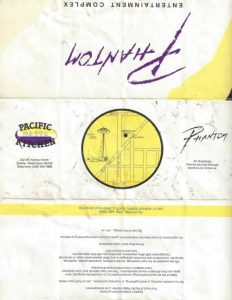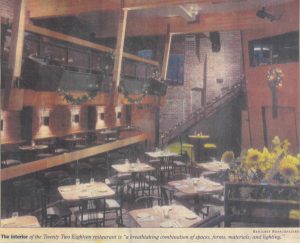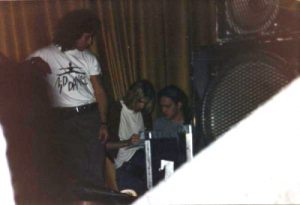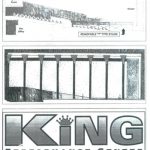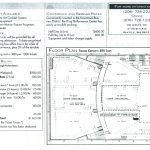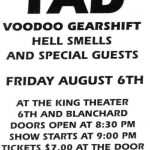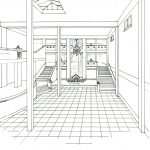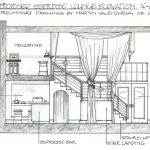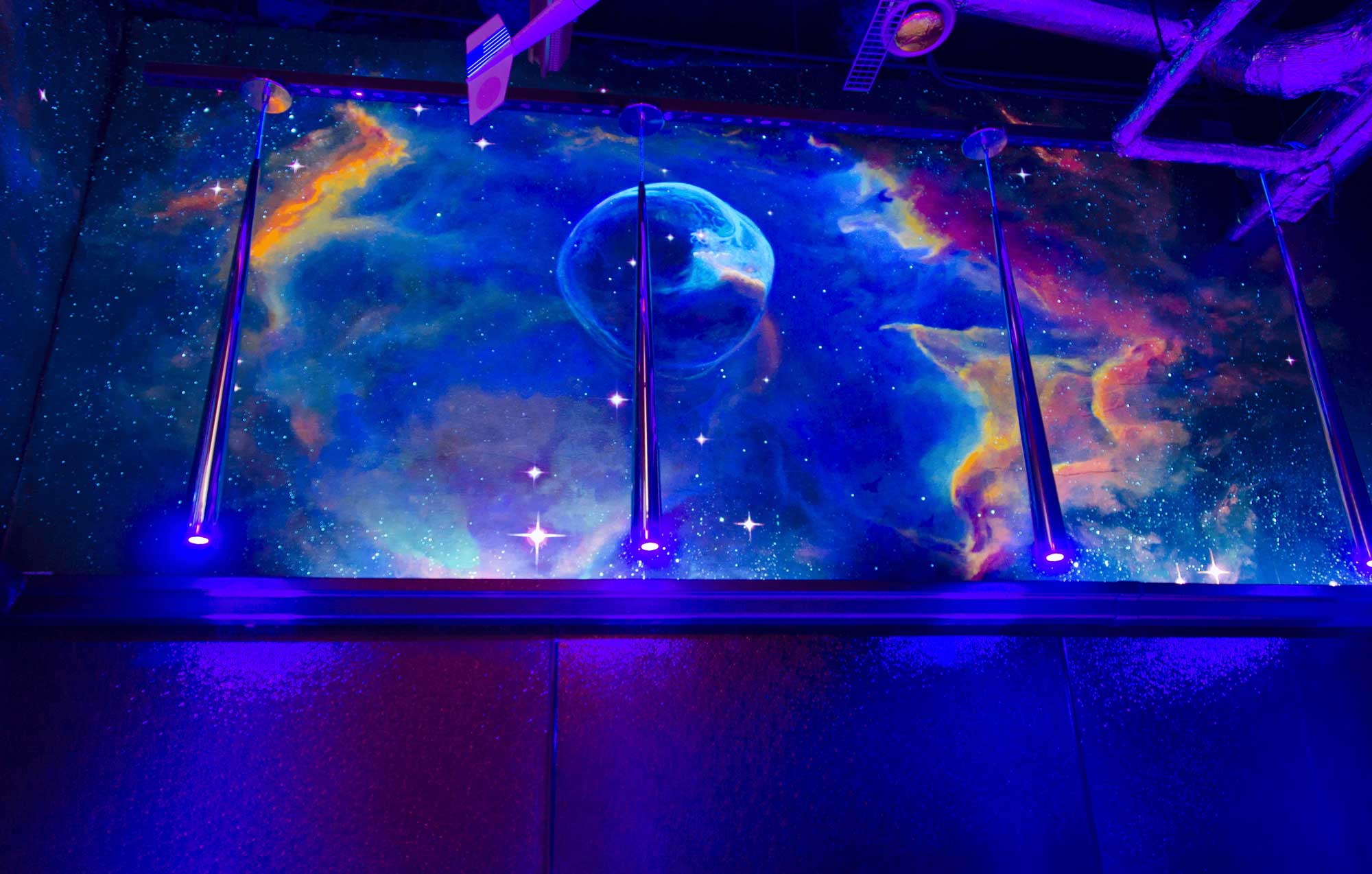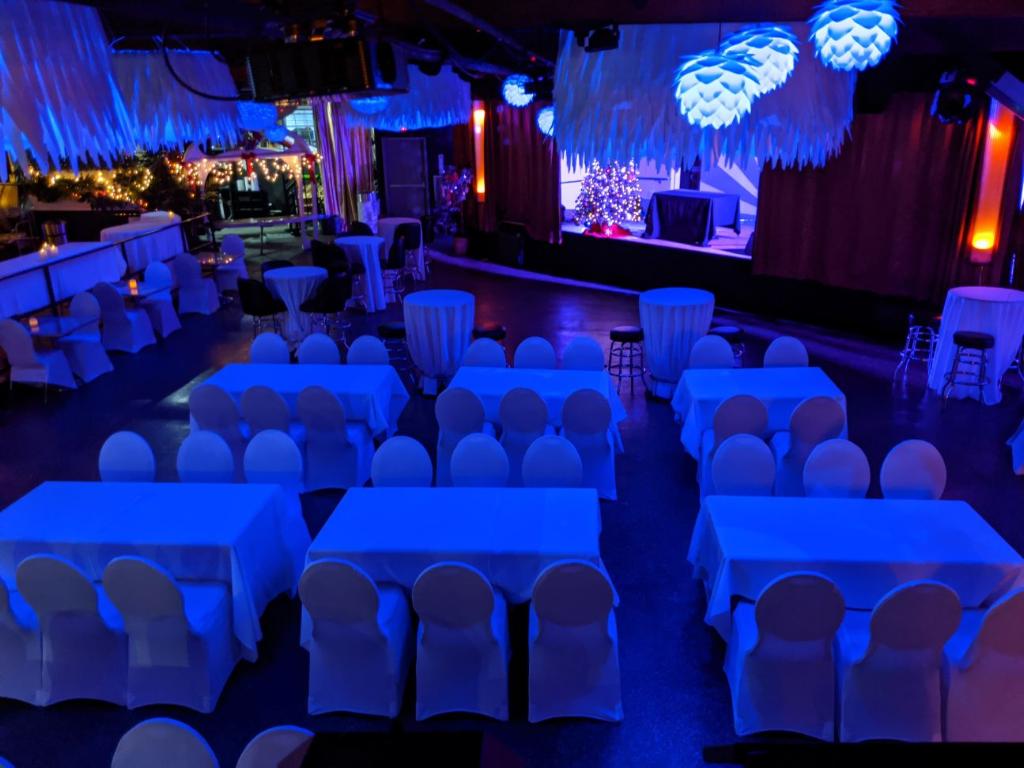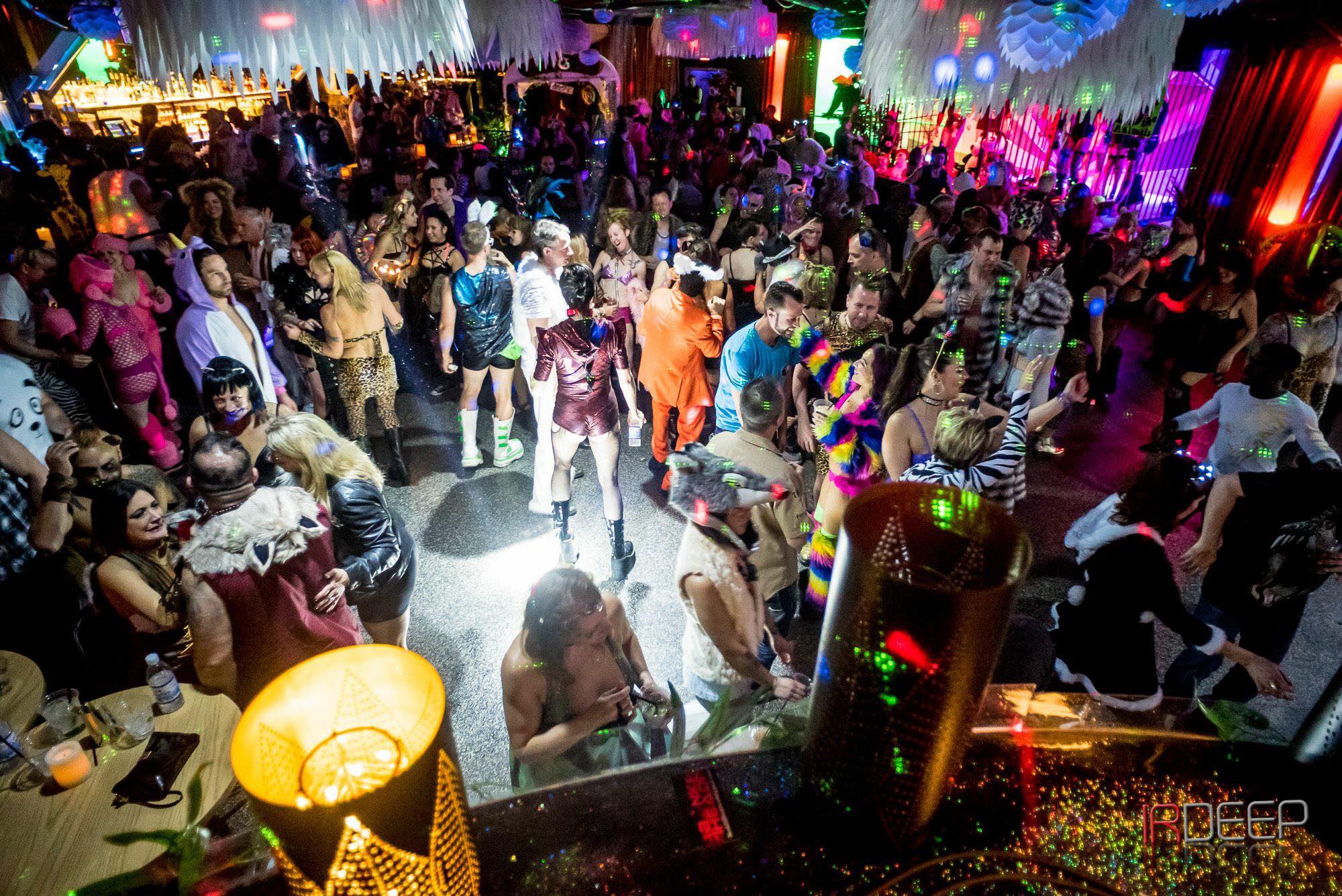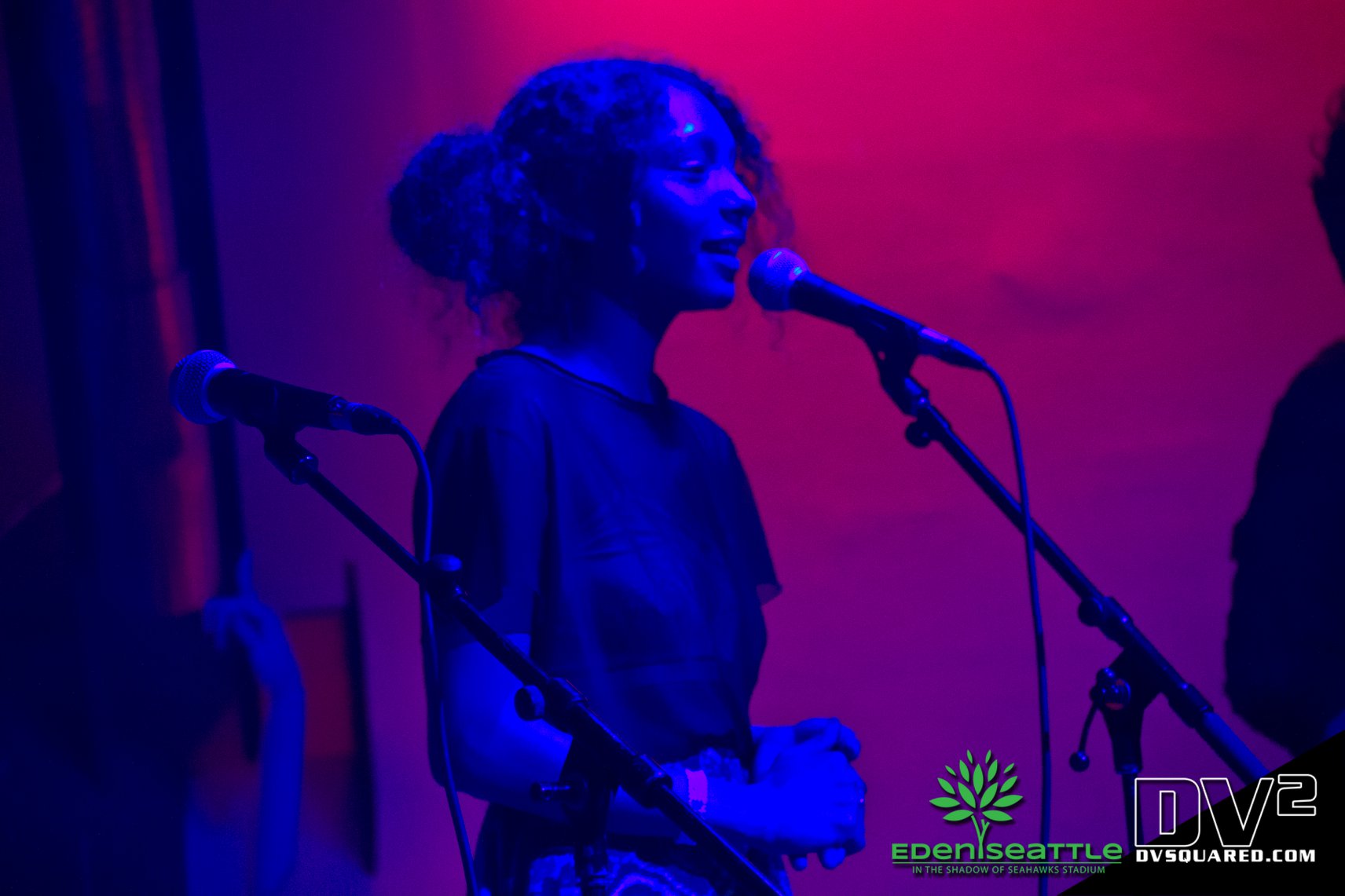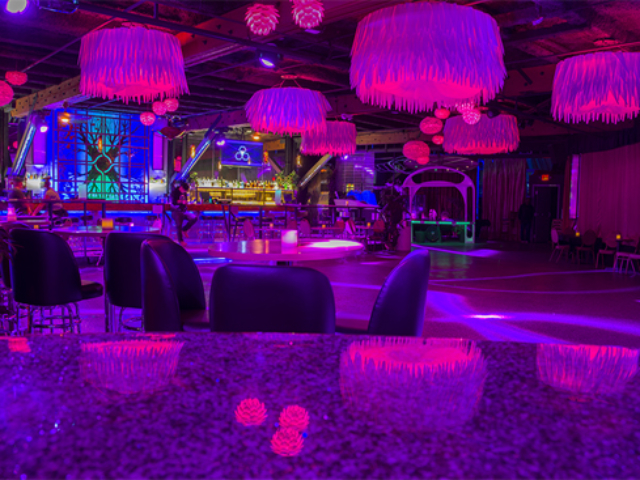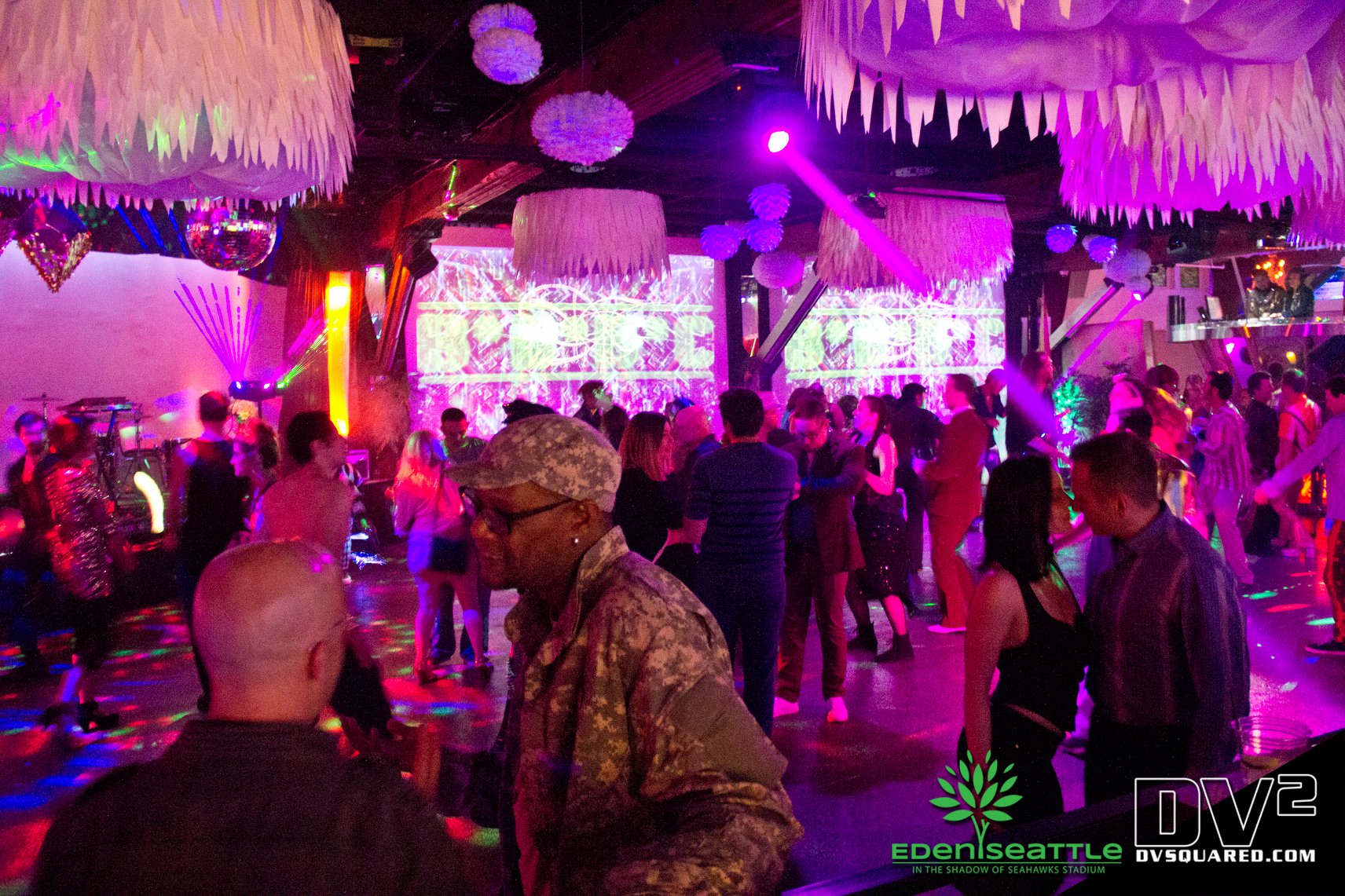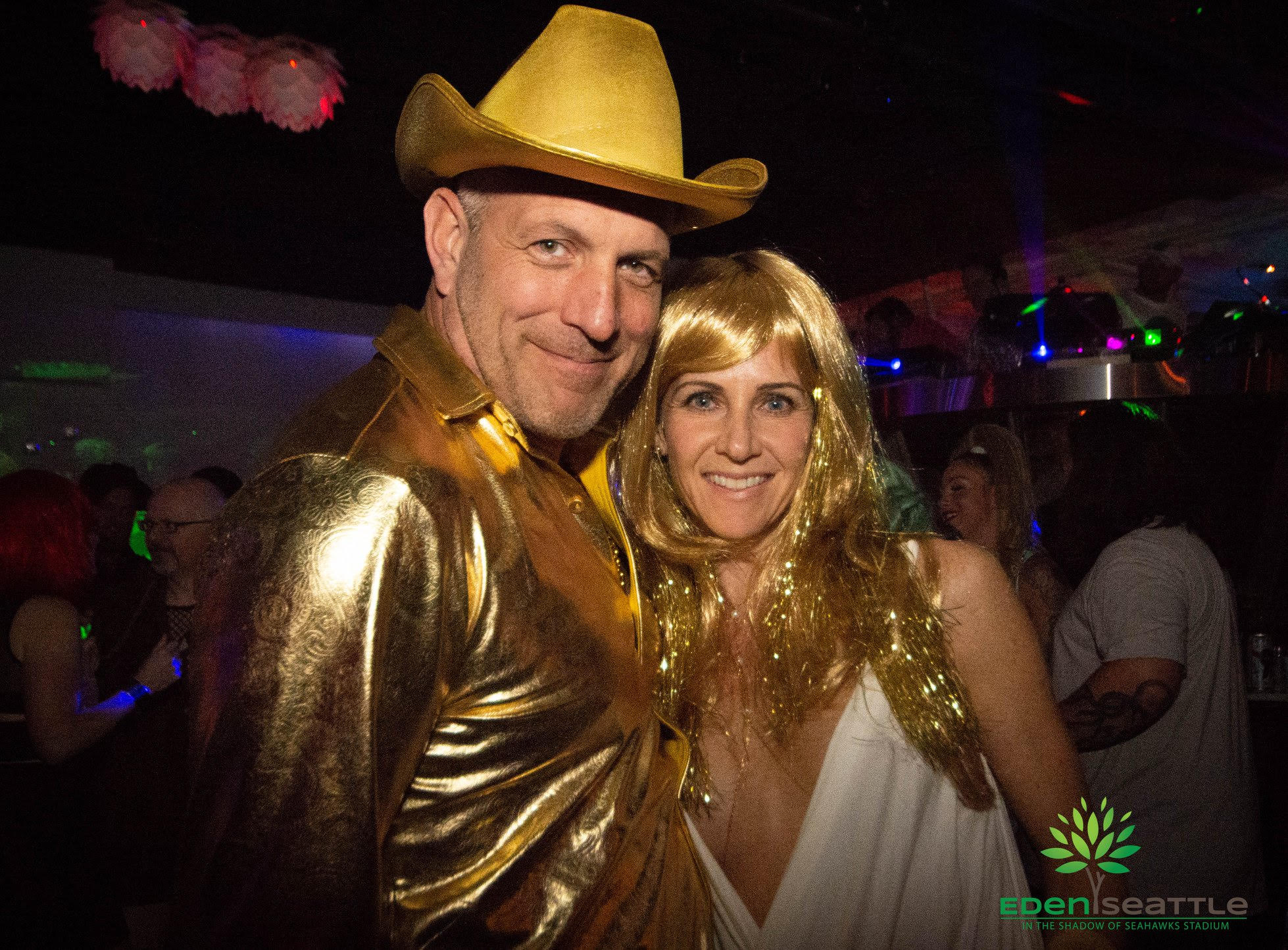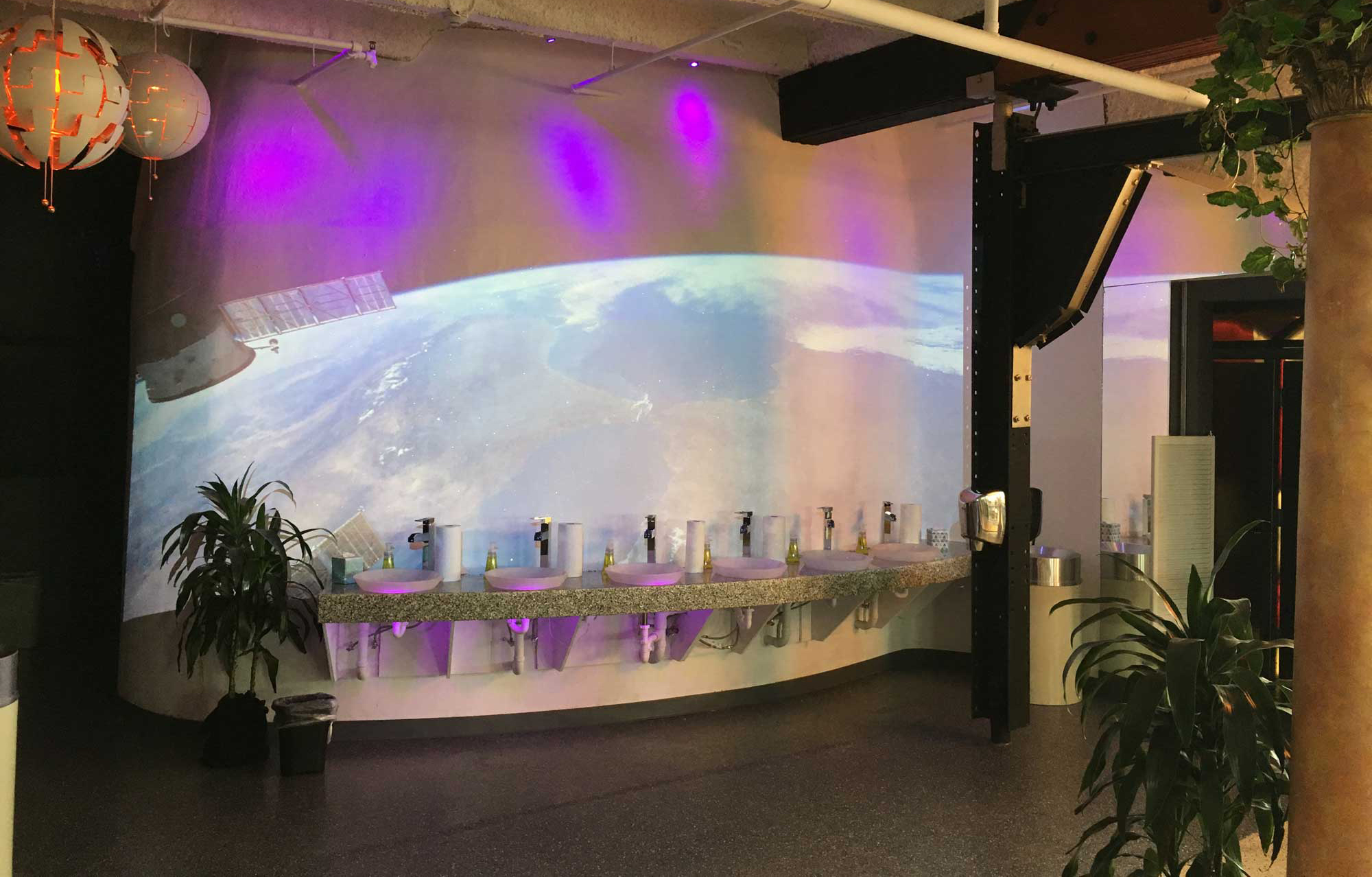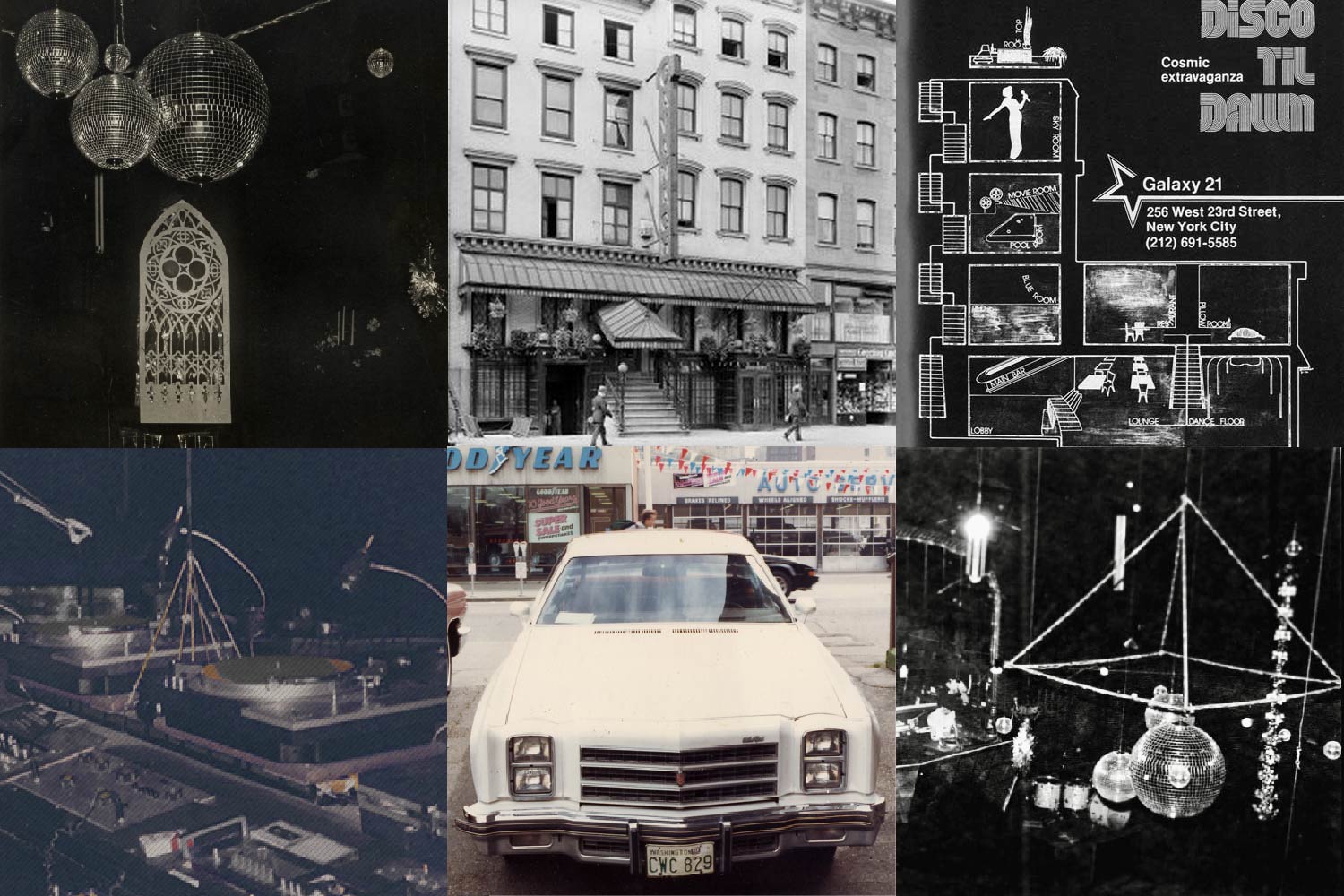Nightclubs
George’s expertise as a nightclub developer and designer has made him a resource for other entrepreneurs nationwide. In the 1970s, he established and refurbished several clubs throughout the United States. During his days running Galaxy 21, George assisted in the redevelopment of the old Penthouse magazine club space on New York’s Upper East Side, transforming it into a restaurant that he named Experiment 4. Later, when he relocated to Seattle, George was an initial investor, developer, and designer at several mainstays of the Seattle nightlife scene. These projects include the long-successful gay nightclub Neighbours, as well as popular locales from the 1980s, such as Skoochie’s, Vortex, and Club Broadway. As a development and design consultant for other nightclub owners, George partnered with the Pacific Occidental Partnership, a prominent Hong Kong real estate firm, to create Phantom Seattle and Phantom San Jose.
Galaxy 21
After moving to New York City, George worked as a salesman with a plastics company. This eventually led him to a job at the radio station WOR, for what began as a sales call to sell the station plastic bags for promotional totes quickly turned into an interview for the station’s sales department.
With the rise of disco music and its appeal to New York’s increasingly diverse population, George took the initiative to create a new format for WOR incorporating this new, popular music. WOR decided to shelve the format, but George wasn’t done with disco. It was during this era that George entered the world of party promotion. He first hosted gatherings at his own apartment, funded with entertainment allowances from WOR. However, the crowds at these parties – made up of a mix of George’s sales clients, his personal friends, and the elite after-hours circles of New York – quickly grew too large for the limited space.
George’s parties soon moved to the Fifth Avenue Hotel in Greenwich Village. These popular gatherings mixed the elegance of the hotel’s grand ballroom with disco-inflected designs and modern art. The DJ spun Motown hits and even early disco tracks. With word spreading fast and over 1,000 people flocking to the hotel each weekend, it wasn’t long before these parties again outgrew their venue. George knew he needed to expand, so in 1974, he organized a group of investors to purchase a larger space. The prominent parties moved to the former Cavanaugh’s restaurant on 23rd Street, four doors down from the famous Chelsea Hotel. George converted this old space into a new nightclub named Galaxy 21.
- Poster for Disco Til Dawn at Galaxy 21 (New York) – George Freeman
- Boncellia Lewis at Galaxy21, Disco Till Dawn (New York) – George Freeman
- Disco Till Dawn – Brochure from George Freeman’s Galaxy 21, New York
Galaxy 21 quickly became one of the true hot spots in the New York club scene. With multiple themed rooms, an art gallery, and famous DJs backing up a uniquely powerful sound system, the club attracted large crowds right from the start. Prominent guests included Jack Nicholson, Cher, the original Broadway cast of Rocky Horror Show, Motown songwriters Nick and Valerie Simpson, Aretha Franklin, the Rolling Stones, and more. However, the demographic makeup of the crowd shifted over time. After its opening, Galaxy lost some of its diversity and evolved into a primarily Puerto Rican club.
In 1976, George was presented with an opportunity to bring diversity back to the club. Someone from the Tomorrow Show with Tom Snyder on NBC called Freeman about doing a nationally-televised show from a gay nightclub. Television was not openly gay-friendly then, so this was an unbelievable opportunity. Tom Snyder wanted to discuss gay entrepreneurship and the rising gay market, and he thought it would be ideal to do the show live from Galaxy. The only problem with NBC’s offer was that they had to finish filming by 7:30 pm to make the 11:00 pm live broadcast. George met with the Galaxy staff and devised a plan to make this happen. NBC wanted live dancers, and with his party-planning experience in the disco dance era, George had plenty of connections. He also asked his friends from the Harkness Dance Center, Alvin Ailey Dance Theater, and Joffrey Ballet to come and dance live at the Galaxy.
Freeman immediately recognized this publicity opportunity as a way to restore the initial popularity of the nightclub among all New Yorkers. With this in mind, he printed 1,000 embossed fliers to promote the live show and gave out 30-day VIP “fresh face” passes to select guests to bring in new patrons and inject new energy into the club. The show was a tremendous success; not only did the NBC live national broadcast promote Galaxy 21 as a popular nightclub, but the media coverage shifted the club’s demographics back to its original identity within six weeks of airing.
Experiment 4
- Experiment 4 (New York) – Club Pamphlet
- Poster for Disco Club Experiment 4, New York
327 E. 48th Street, New York, New York Experiment 4 was a midtown Manhattan discotheque that opened in 1976. At some point in 1976, the cash flow at Galaxy 21 was sufficient enough that George went out looking for other investments. He had heard of a struggling club on Upper East Side near the UN building in Manhattan. George learned that the owners needed help because they didn’t have the money to resurrect the failing club. George and several friends worked out a deal with the owners, and hired the former manager of Le Jardin to take control of his new club. Since it was George’s fourth venue following the party-concept club, he named it “Experiment 4”. They renovated the space, put in a new sound system using George’s overstock of lighting and sound supplies at Galaxy 21, and used their previous promotion experience to put Experiment 4 on the map. The club’s location was structured to draw in the East Side gay crowd, which was much more professional than the Village and the rest of the New York clubbing scene. George has always taken a background role in his club’s daily operations, which worked fine at Galaxy 21. However, Experiment 4 was the first time George had ever entered into a contract on a handshake. Upon reflection, George realized he should have made it his last. Over the months, Experiment 4 and Steven communicated less and less with George. He received no money from the principal investment, and the partners’ relationship burned out. George was able to retrieve some of the sound equipment, but he lost most of his initial investment. He learned a valuable lesson: don’t lend money to friends without first getting an agreement in writing.
Skoochies
Somewhere around 1982 or 1983, the old Cert dinner theater at 131 Taylor Ave N. had announced that they were closing and they wanted to have their farewell celebration and wanted to rent the monastery. George agreed to a $800 rental fee and another $800 for catering. Having never been to the Cert to view a performance, George only knew some of the actors and performers through conversations at the monastery. Yet he found out that the theater, located in an old bowling alley, was looking for a new tenant, and Cher and Xanadu were the hottest things in disco roller rinks. There was a song at the time, Cherchez La Femme, by Doctor Buzzards Savannah Band, which George thought was a fascinating name. Drawing inspiration from restaurant entrepreneur Gerry Kingen of Red Robins, his goal became to brand the new roller skating rink as Dr. Buzzards Roller Skating Emporium, imagining a “skating buzzard truck’n on down” as the logo. After several meetings, George discussed the idea with his friends and decided to move forward with construction.
Halfway into the project, while still under construction, one of the partners (who was young and a hot head) had one of the workers pour a gallon of paint on George’s partner’s beetle after an argument. George objected, fired the worker, and told the partner he would take severe action if it happened again. After another disagreement, George commenced a lawsuit and pulled all the sound and lighting equipment out of Dr. Buzzards, eventually losing his holdings in the business after a 2-year long lawsuit. Dr. Buzzards evolved to Skoochies, and went on for a number of years with a checkered history of drive-bys, shootings, drugs, and calls from the community to shut it down after George’s departure.
The Waterworks, a ULC Retreat
Having been born and raised in Spokane, George always suspected that the city needed a beacon of enlightenment and entertainment. He went to Spokane in 1982 and rented a building on 3rd Ave, which George called The Waterworks, a Universal Life Church retreat. At the time, Bruce Taylor had an advertising agency in Spokane and had been throwing after-bar parties at his home. George told Bruce he wanted to expand to Spokane to make a gay health club retreat with a jacuzzi bathhouse and dancing. It was to be a mini version of what he discovered back in New York at the continental baths, with Barry Manilow on piano backing up Bette Middler. The Waterworks was a small building that George split into three parts: the recreation, the dancing/celebration area, and the bunkhouse with attached waterworks. George found a 14’ long, 5’ deep swim trainer with huge jets, and he brought that into the building in preparation for opening The Waterworks. However, after opening the dancing side of The Waterworks, the local gay bars began to object since Spokane had restrictions stating that nobody could dance after midnight.
Nevertheless, being a church, The Waterworks guests were allowed to perform the holy dance any day at any hour. While the local gay community enjoyed it, the two owners of Empress 425 objected and plotted with the police department and state liquor control to close down The Waterworks. Soon after, the establishment closed its doors.
Neighbours
To open Neighbours, Mustafa Elassiouti (Moe) was introduced to George Freeman by Gary Penny of Neighbours-Vancouver, which was located on Robeson St sometime around 1982. George had the idea of going after the Brass Connection, a gay nightclub restaurant combination about a block away; this tavern had become a packman pool hall dominated by minorities in a changing neighborhood. George immediately saw an opportunity with the 7000 sq. ft. operating tavern to convert it into a gay bar. In addition, he saw an opportunity to bring in previous employees from The Monastery; George could teach them the business, set them up running satellite locations, and help with the church’s outreach into Seattle’s gay business owners’ community. Scott Terrill, a DJ from another of George’s previous ventures, The Waterworks, volunteered to have the liquor license put into his name. Mustafa Elassiouti, an Egyptian citizen living in Canada, could not get an American license because he was not an American citizen.
Additional work was performed by George’s carpenter, Ross Michelle, his assistant, an electrician named Ray Moy, and some of the homeless people that worked at The Monastery. While working on the construction, Ray Moy overheard Moe and the attorney discussing what they thought to be a private conversation on how to cut out George Freeman. Moe said something to the effect, “If we do, Freeman will sue us; you know he loves to sue,” the attorney replied, “Yeah, but he’s George Freeman of The Monastery. What court in Seattle would listen to him?” Moe and his attorney were successful in getting the paperwork for the club. However, they lied and said the liquor board would not accept George Freeman’s sister as a franchisee owner, stating that the liquor board demanded George have no association whatsoever and could not appear on the premises, or they would not issue the license to Scott. Moe suggested Freeman take control of Neighbours-Vancouver, BC, along with his other club north of Whistler, BC, Mustafa’s. Moe would stay and run Neighbours with Gary Penny, his former manager at Neighbours-Vancouver. George agreed to the setup, in which all money would go to a shared pool with George running the Canadian facilities.
Given that the Washington State liquor board was after Freeman, everything in their agreement had to remain verbal to prevent the board from seeing a buyout of $40k to be paid to Freeman over 12 months. At the time, George believed that Moe was an honest person. He didn’t know about the conversation to get rid of him using the proffered document for the liquor board showing a $40k buyout after signing the document and receiving the first payment. Subsequently, George learned about the previous conversations overheard by Ray Moy and sued Neighbors and Moe in King County Court. The court case took 24 months and $30k in legal fees. Eventually, George had to bow out due to an inability to pay for ongoing legal fees, and Moe successfully took control of Neighbours. According to the liquor distributors, Neighbours became the largest liquor-pouring bar in Seattle, and Moe made no less than $90k a month from the Seattle gay community. Little did the patrons know that their money was being sent to Egypt to build a large resort for Islamic Egyptians. Once completed, this resort would not allow gay men accommodations, and if found holding hands or kissing, they could be put to death. To this day, George regrets creating Neighbours. Neighbours claim to be Canadian-owned in an effort to mask that the ownership of Neighbours was and always has been Egyptian.
Soundstage (Las Vegas)
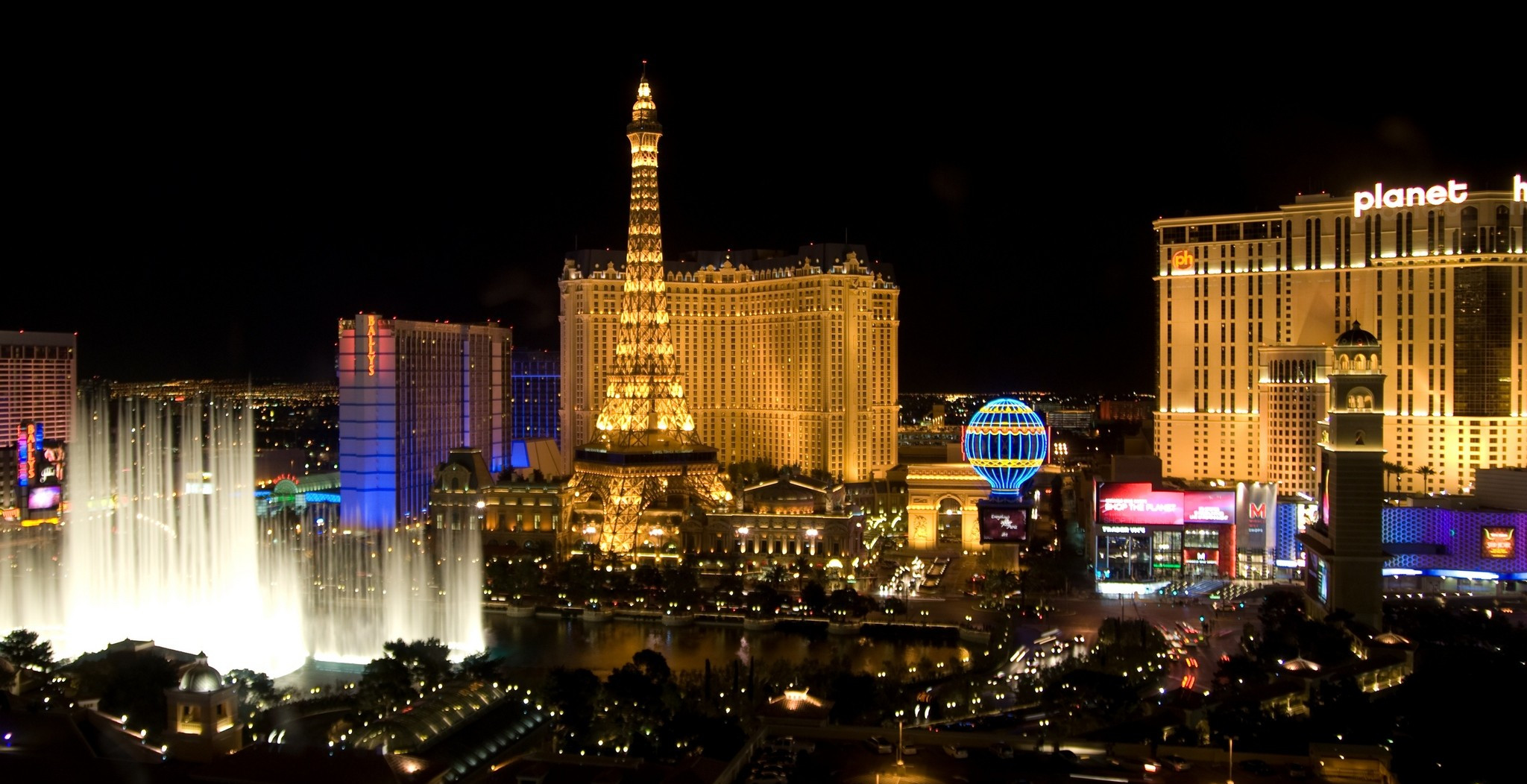
One of George’s most successful endeavors in the 1980s was Soundstage in Las Vegas. Soundstage was one of the city’s most important venues in its era. It introduced Las Vegas to up-and-coming alternative rock acts like R.E.M., Jane’s Addiction, and The Dead Kennedys. Multiple award-winning entertainer Ben Vereen hosted his famous Vegas Dance Workout classes at Soundstage. The venue also participated in the landmark Great Peace March in 1986, serving as a staging area for the Las Vegas leg of actor Robert Blake’s cross-country demonstration against nuclear weapons.
While in Las Vegas, George contributed elsewhere to the city’s evolving culture. He was on the board of directors for Las Vegas Magazine as it became one of the most successful city magazines in the country. The magazine was famous for introducing America to its food editor, Chef Wolfgang Puck, and producing various programs for championship boxing and other major events at Las Vegas venues. Despite his busy schedule, George also found time to spearhead the restoration of the storied Whitehead Mansion, one of the oldest landmark homes in the city.
From his earliest parties to his time managing The Monastery and beyond, George Freeman’s interior and sound designs have long been known as unparalleled. Aiming to make every inch and eye-full a breathtaking experience, he believes in perfecting the details of any space.
Club Broadway
By the mid-1980s, after the demolition of The Monastery, George would go on to a new venture: Club Broadway. This beautiful building was opened in 1911 and remained in use by the Scottish Rite until the late 1950s. The property was built on the old Spring Street right-of-way, vacated by the city in March of 1891.
Featured below are a few historical photographs of the site location, including a music wiring chart for the base of the old building. Club Broadway thrived through the mid-1980s until around 1988.
At least 40′ ceilings supported by gorgeous rococo pillars. The upstairs entrance was at the tip of the building. You entered the basement, if you want to call it that, on the Broadway side, because that space also had very high ceilings, maybe 30′. You walked down wide curving red carpeted stairs, and the music pulled you in. It was an underage club. You entered at sundown and left at sunup.
- Club Broadway, historical photo with graphical color added.
- Early photography from Club Broadway building.
Vortex
Vortex was closed because of its black audience; the city of Seattle was contacted by Seattle University and a local building owner directly across the StreetStreet from Vortex who claimed that while George was working on the building, they had noticed an increase in syringes and condoms in the neighborhood.
- Vortex_Article-2_GeorgeFreeman
- SU_balks_at_vortex_George-Freeman
Most of this was, however, before Vortex ever opened. Seattle University alums contacted Seattle Pi Alumni to write editorials about why George Freeman shouldn’t be allowed to have a gay establishment so close to a catholic university.
The freshman class of Seattle U was told to avoid George Freeman because of his alleged influence over young people and strong personality. Fliers were even put up in the elevators of the university, reminding people to beware of the Vortex. Soon after, The Seattle Times followed suit with an editorial, prompting Ken Schram of KOMO TV to run ten commercials asking, “Is there no way to get rid of the George Freemans of this world?” Vortex was soon closed.
Phantom (San Jose)
Coming soon!
- San Jose Phantom Club Pamphlet (George Freeman)
- Phantom Club San Jose California (George Freeman)
- Phantom Club – Photo Courtesy of Mark Millett
-
Phantom Club,
San Jose
Phantom (Seattle)
Phantom, Seattle, offering the city an “entertainment complex.” The restaurant facility offered the finest of Pacific Pasta Kitchen and provided Live Entertainment.
- Phantom Club Seattle
- Phantom Club Seattle – George Freeman
Be it a romantic evening, a social gathering, or a business luncheon, the event space was ready. Phantom boasted state-of-the-art sound technology complemented by acoustically designed rooms for ultimate sound reproduction. The very best national and local designers created a phenomenal showpiece. Full room bookings, private functions, corporate parties, weddings, banquets, conventions, and incentive packages for any other special event need were possible. George arranged renowned management support staff for first-class service, food, and entertainment. Phantom was intended as an exciting world-class adventure.
2218 1st Ave Restaurant and Club
Coming soon!
King Performance Center
George partnered with Alan Tillinghast, who wanted to program the King Performance Center as a rock and roll band venue on August 6th. Allen had mentioned to George that Kurt Cobain and Nirvana wanted to do a preview event at the King. George, a jazz fan, had no knowledge of Kurt Cobain and could not understand, upon his arrival, why there was a line around the block at 6th and Blanchard. Nirvana was the biggest act ever to appear at the King Theater.
Nirvana’s performance was for a benefit show for The Gits’ Mia Zapata. It would be Nirvana’s last show as a three-piece before adding Pat Smear into the mix. Spike and Mike’s animated cartoon festival, the Jewish film festival, and the Seattle Lesbian & Gay film festival were other acts that appeared at the King Theater.
-
King Performance Theater, Seattle
(George Freeman)
- King Performance Theater – layout, Seattle (George Freeman)
-
Nirvana Flyer King Performance Center
(George Freeman)
Casablanca Lounge (Proposed)
Proposed club.
- Casablanca (The Jazz Lounge) – Proposed
- Casablanca (The Jazz Lounge) – Proposed
EdenSeattle SoDo
EdenSeattle SoDo was a 9,000 sq. ft. full-service event venue, occupying a former engine factory originally built in 1916. Located just two blocks south of Safeco Field, Eden featured an elegant, lush interior and a cosmic ambiance befitting Seattle’s modern, eclectic vibe. Featuring a mix of rough, industrial elements and luxurious, modern elements, Eden represented Seattle’s evolution from a small town of raw industry to a cosmopolitan city of the future.
EdenSeattle SoDo featured a full bar and a massive, adaptable event space that could cater to a wide array of events like weddings, parties, receptions, brunches, corporate gatherings, concerts, performances, club nights, and much more. Eden's unisex bathrooms were named one of Seattle's Most Mind Blowing Bathrooms in Western Washington! Eden Seattle ran for 4 incredible years, but like many other clubs it was forced to close due to public health concerns during the onset of the global pandemic.

